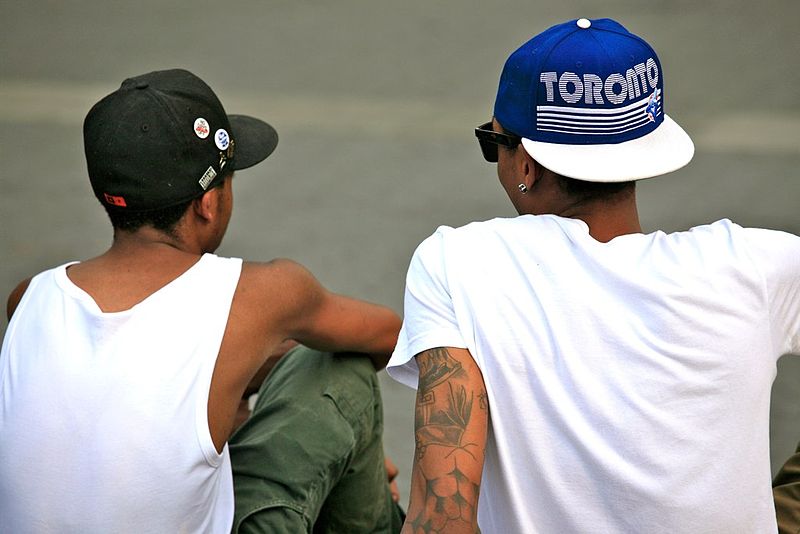The policy banning “gang insignia and garb at the Marin County Fair is reportedly being called racially discriminatory by the Northern California ACLU.
In addition to statistical evidence about the racial and age characteristics of persons usually targeted, the very notion of what constitutes gang attire or insignia is constitutionally fraught. There is little consensus among statutes, policies, law enforcement, and academics about the indicia of gang membership or even what constitutes a gang. Are the fans of Insane Clown Posse a gang? (The FBI once decided they were, but changed its mind). And is wearing the color blue or sportsgear or having a tattoo with one’s nickname sufficient proof of gang membership?
And, intriguingly, who decides what constitutes gang attire? Common knowledge? Police officer testimony? An outdated handbook?
The Ninth Circuit Court of Appeals considered a challenge to an anti-gang dress code by members of the “Top Hatters,” who were escorted off the grounds of the Gilroy Garlic Festival, not so far from Marin County. The offending attire was vests that included an image of a skull with wings and a top hat with the words “Top Hatters” above the top hat and the word “Hollister” written below. Despite the fact that an on-duty police officer “escorted” the vest-wearers off the festival grounds, the Ninth Circuit ultimately held in Villegas v. Gilroy Garlic Festival that the festival was not governmental, and thus the Top Hatters could not claim any constitutional rights. This does not seem to be the case with Marin County.
However, the lower court in the Garlic Festival case also struggled with whether the Top Hatters had a First Amendment claim of “speech” asking whether the badge on their vests was conveying a generally understood message? This “catch-22” – – – that the person must prove that their dress conveys a message even as the state is seeking to ban that message – – – can complicate First Amendment challenges to bans on gang attire.
These First Amendment claims often merge with Due Process claims. The United States Supreme Court has declared unconstitutional Chicago’s city ordinance criminalizing loitering by gang members. On the other hand, the California Supreme Court has upheld a prosecutorial injunction banning gang members from wearing clothing bearing specific numbers, although it limited the ban to “the conscious expression of gang affiliation, support and allegiance.”
But race combined with age and gender are overriding factors in the construction of “gang” and “gang membership.” For example, in Los Angeles, almost half of African-American men between the ages of 21-24 were listed on the gang database; since most did not have criminal records, presumably these men favored gang attire. In Minnesota, with a population that is approximately five percent African-American, a 2009 report notes that African-Americans represented approximately half of the persons listed in the gang databases. The report also expressed community concern that the criteria for inclusion in the database highlighted “factors” – – – including attire and tattoos – – – “that are synonymous with the urban youth culture.”
In short, how can Marin County be sure it is not simply banning a style?
[ image via]

